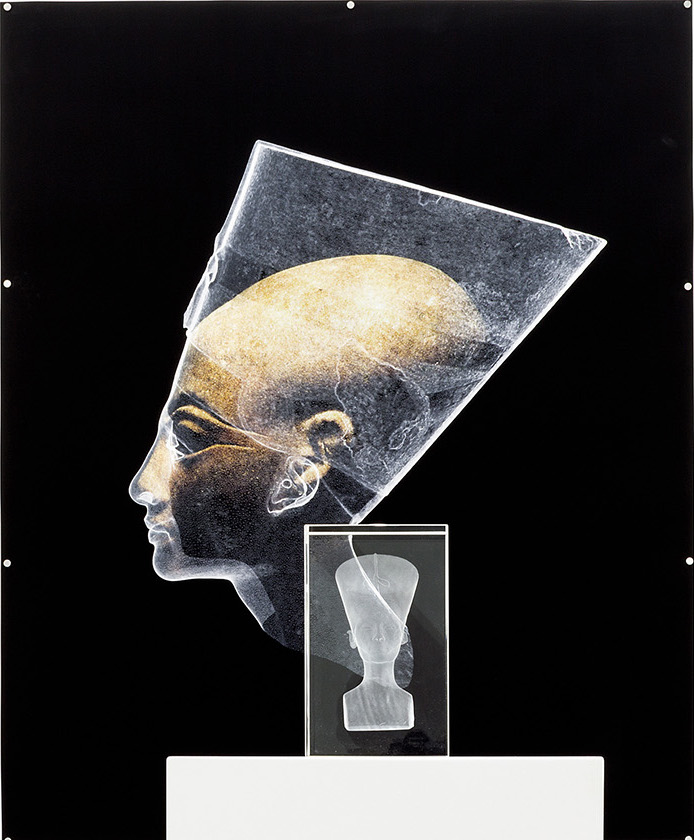http://nefertitihack.alloversky.com/
In early 2016 Nora Al-Badri and Jan Nikolai Nelles grabbed headlines across the world by announcing that they had snuck a hacked Kinect Sensor into the Neues Museum in Berlin and done a guerrilla 3D scan of the bust of Queen Nefertiti, a precious artwork from ancient Egypt.
Al-Badri and Nelles called their work The Other Nefertiti and released their data file to world. Later they displayed a 3D printed reproduction of Nefertiti's bust in Cairo as part of their project, suggesting that only a high-tech heist allowed them bring this part of Egyptian history back to its rightful place (German archaeologists took it from Egypt in 1912 and have never given it back. Ever since Germany has consistently denied loan requests from the African country’s cultural institutions).
“With the data leak as a part of this counter narrative we want to activate the artefact, - say Al Badri and Nelles - to inspire a critical re-assessment of today’s conditions and to overcome the colonial notion of possession in Germany.”

No need to say, their message and the intriguing story of a covert museum scan captured the public's imagination. Not only anyone can now have an incredibly high-quality reproduction of the sculpture, or remix it to make new artworks (dozens of downloadable digital objects based on the Nefertiti bust are now downloadable on the Internet), but the very notions of origin and singularity as well as about ownership are questioned. “Is the bust in the museum — as people have raised in the past — original? And is this even meaningful?”, say Al Badri.

Some experts questioned the fact that The Other Nefertiti was actually scanned by Al Badri and Nelles. “Maybe it was a server hack, a copy scan, an inside job, the cleaner, a hoax. It can be all of this, it can be everything”, the artists replied. “The whole question about originality and authenticity is the same in data as well as in artifacts, and as well in our effort. And, of course, that is our point,” they added. A web of half-truths and hints about how the scan was made is legitimately part of the artwork itself: “museums are telling fictional stories, their stories, just because they control the artifacts and the way of representation”, what if this hierarchy would be suddenly turned upside down?

The whole Nefertiti Hack operation not only fueled a techno-political debate in such unusual places as online 3D technologies fora, but also put Al Badri and Nelles in touch with Egyptian activists in contemporary Egypt, still recovering from the brutal repression after the revolt in 2011. What appeared to be a statement about cultural heritage and digital data swiftly connected to colonialism, and even to the opacity of a global black market of ancient works of art. “What we strived to achieve is a vivid discussion about the notion of possession and belonging of history in our museums and our minds,” she continued. “A discussion on the originality and truth of data as well as material objects is necessary. Because in the end, one concludes that the institutional practice of today’s museums and collections all around the Western world are corrupted.”